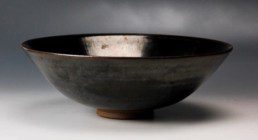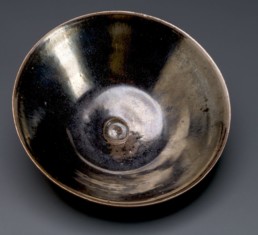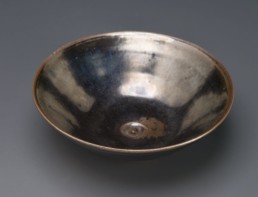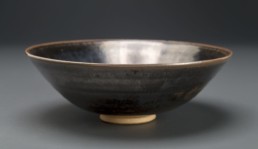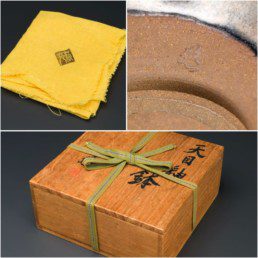A Tenmoku Bowl by Living National Treasure Yuzo Kondo
Artist:Yuzo KondoEra:ShowaPrice:$2,500Inquire:info@shirakuragallery.com
Yuzo Kondo is one of the more recognized names in the world of modern Japanese pottery of the 20th century. Though known mainly for his sometsuke creations (blue and white porcelain), he did not settle on this style until well into his potting career that lasted over seven decades. The piece shown here then would be from an earlier period and is evidence of his competency with varied styles and glazes—not just the one he is most well-known for. As any experienced potter will tell you, tenmoku glazes are notoriously difficult to master and, judging from this piece, it looks as though Kondo spent a great deal of time perfecting this technique.
Born the third son to a samurai family that formerly worked in service of Kiyomizu temple, Yuzo Kondo (1902 -1985) was the first in his family to take up the art of pottery as a vocation. After studying ceramics for a number of years, he then turned his attention to painting, which would serve him well later in his career when he used his stylized and bold brushwork techniques to paint naturalistic depictions. Most notably among these was the iconic image of a pomegranate he used to adorn many of his vessels. Today his kiln and gallery still exist on the upper slope of the illustrious Gojo-zaka district, not far from Kiyomizu temple where his family formerly served as guardian protectors. In recent years this residence has been transformed into a museum, the main attraction being a gigantic blue and white painted plate created by Kondo that, at the time, was reported to be the largest of its kind in existence.
In excellent condition this piece is 7.9 inches in diameter at its widest point (20 cm), and stands 2.6 inches tall (6.5 cm). It comes with its original wood box signed by the artist (tomobako), a protective cloth, and bears Kondo’s seal on the base of the bowl (examples of signature and seals available upon request).
